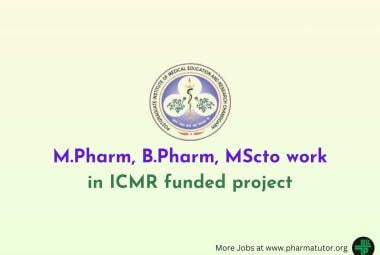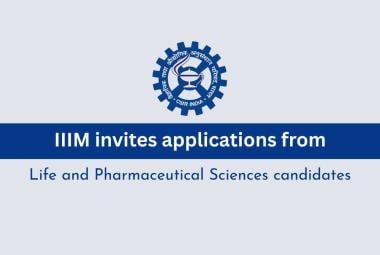REFERENCES:
1.Tombs M. P., and Harding, S. E. An Introduction to Polysaccharide Biotechnology. London: Taylor and Francis. (1998), 134-142.
2.Yen, M-T. Mau, J-L. Physico-chemical characterization of fungal chitosan from shiitake stipes. LWT - Food Science and Technology, (2007), 40, 472-479.
3.Terbojevich, M. and Muzzarelli, R. A. A. Chitosan. In: Phillips, G. O. and Williams, P. A. (Eds.). Handbook of Hydrocolloids Cambridge: Woodhead Publishing Ltd.(2000), 367-378,
4.Ogawa, K. and Yui, T, Effect of explosion on the crystalline polymorphism of chitin and chitosan. Bioscience Biotechnology and Biochemistry, (1994), 58, 968-969.
5.Park, J. W., Choi, K-H. Park, K. K. Acid-base equilibria and related properties of chitosan. Bulletin of the Korean Chemical Society, (1983), 4, 68-72.
6.Kubota, N. and Eguchi, Y. Facile preparation of water-soluble n-acetylated chitosan and molecular weight dependence of its water-solubility. Polymer Journal, (1997) 29, 123-127.
7.Rinaudo, M. Chitin and chitosan: properties and applications. Progress in Polymer Science,(2006). 31, 603-632.
8.Terbojevich, M. Cosani, A., Conio, G., Marsano, E. and Bianchi, E. Chitosan: chain rigidity and mesophase formation. Carbohydrate Research,(1991). 209, 251-260.
9.Mazeau K. and Rinaudo M. The prediction of the characteristics of some polysaccharides from molecular modelling. Comparison with effective behaviour. Food Hydrocolloids, (2004), 18, 885–898.
10.Dodou, D., Breedveld, P. and Wieringa , P. A. Mucoadhesives in the gastrointestinal tract: revisiting the literature for novel applications. European Journal of Pharmaceutics and Biopharmaceutics,(2005). 60,1–16.
11.Illum, L. Nasal drug delivery: new. Developments and strategies. Drug Discovery Today,(2002) 7, 1184–1189.
12.Aspden, T. J., Mason, J. D. T., Jones, N. S., Lowe, J., Skaugrud, Ø. and Illum, I. Chitosan as a nasal delivery system: the effect of chitosan solutions on in vitro and in vivo mucociliary transport rates in human turbinates and volunteers. Journal of Pharmaceutical Sciences,(1997). 86, 509-513.
13.Davis, S. S. and Illum, L. Chitosan for oral delivery of drugs. In: Muzzarelli, R. A. A. (Ed.). Chitosan per os: from Dietary Supplement to Drug Carrier Grottammare: Atec.(2000), 137-164,
14.Van Buren, J. P. Function of pectin in plant tissue structure and firmness. In: Walter, R. H. (Ed). The Chemistry and Technology of Pectin San Diego: Academic Press.(1991), 1-22,
15.Ridley, B. L., O’Neil, M. A. and Mohnen, D. Pectins: structure, biosynthesis and oligogalacturonide-related signalling. Phytochemistry, (2001), 57, 929-967,
16.Willats, W. G. T., McCartney, L., Mackie, W. and Knox J. P. Pectin: cell biology and prospects for functional analysis. Plant Molecular Biology, (2001), 47,9-27.
17.Lapa sin, R. and Pricl. S. Rheology of Industrial Polysaccharides, Theory andApplications. Blackie, London, UK. (1995).
18.Oakenfull, D. G. The Chemistry of High-MethoxylPectins. In: Walter RH (Ed.) the Chemistry and Technology of Pectin, Academic Press, San Diego.(1991), 87-108.
19.Yadav, N., Morris, G. A., Harding, S. E., Ang, S. and Adam s, G. GVarious non-injectable delivery systems for the treatment of diabetes mellitus. Endocrine, Metabolic & Immune Disorders - Drug Targets, (2009).9, 1-13.
20.Jabbal-Gill, I., Fischer, A. N., Rapp uoli, R., Davis, S. S. and Illum, L. Stimulation of mucosal and systemic responses against Bordetella pertussis filamentous haemagglutinin and recombinant pertussis toxin after nasal administration with chitosan in mice. Vaccine, (1998).16, 2039 –2046.
21.Sriamornsak, P. Chemistry of pectin and its pharmaceutical uses: a review.Silpakorn University International Journal,(2003). 3,206–228.
22.Cha rlton, S. T., Davis, S. S. and Illum, L. Evaluation of bioadhesive polymers as delivery systems for nose to brain delivery: In vitro characterisation studies. Journal of Controlled Release, (2007).118,225–234.
23.Chelladurai, S., Mishra, M. and Mishra, B. Design and Evaluation of Bioadhesive in-Situ Nasal Gel of Ketorolac Tromethamine. Chemical and Pharmaceutical Bulletin, (2008).56, 1596-1599.
24.Sungthongjeen, S., Sriamornsak, P., Pitaksuteepong, T., Somsiri, A. and Puttipipatkhachorn, S. Effect of degree of esterification of pectin and calcium amount on drug release from pectin-based matrix tablets. AAPS PharmSciTech,(2004). 5,1-9.
25.Nafee, N. A., Ismail, F. A., Boraie, N. A. and Mortada, L. M. Mucoadhesive delivery systems. I. Evaluation of mucoadhesive polymers for buccal tablet formulation. Drug Development and Industrial Pharmacy, (2004), 30,985-993.
26.Pilnik, W. Pectin many splendored thing. In: Phillips, G. O., Williams, P. A. and Wedlock, D. J. (Eds.) Gums and Stabilisers for the Food Industry Oxford: IRL Press.(1990).5, 209-222.













